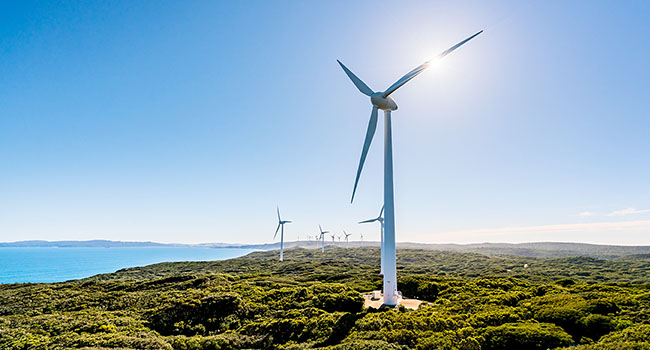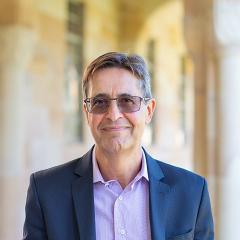AIBE Explainer Series
The AIBE Explainer series provides a breakdown of some of the key economic issues facing Australians today. This explainer has been written by our Director Professor Flavio Menezes and by the Summer Research Scholar Gustavo A. Martínez Tello.
Green hydrogen is expected to play a major role in our economy’s transition to net zero emissions by 2050. It is envisaged that Australia will become a major producer and exporter of green hydrogen-creating jobs and promoting economic growth. The 2022 Intergovernmental Panel on Climate Change (IPCC) Report also highlighted the role of green hydrogen as an alternative fuel to assist with halving global emissions by 2030.
In this AIBE explainer, we explore the economics of green hydrogen with a focus on Australia.
So, what is green hydrogen?
Hydrogen is the most abundant element in the universe. However, it is very rare in its pure form and must be obtained from a chemical process.
There will be different types of hydrogen, depending on the source of energy. This is popularly known as the “hydrogen rainbow”. Green hydrogen is produced with no emissions from renewable sources of energy such as wind, hydro, or solar. An electrolyser uses electricity to break water into hydrogen and oxygen in a process called electrolysis. Grey hydrogen is produced from fossil fuels, and it is considered blue if emissions are captured, stored or offset.
The pursuit of hydrogen as an alternative fuel is not new. There have been various unsuccessful attempts over the last 50 years to scale up hydrogen production. It is hoped, however, that green hydrogen can be used as an alternative fuel, stored, or transformed into ammonia, which is less flammable, has almost double the energy density, and can be stored at less energy-intensive temperatures.

Where might green hydrogen make the most difference?
Table 1 below shows the sectors where green hydrogen may be used as an alternative fuel. The sectors with high priority are those where electrification is not feasible. High-priority sectors may have to bear higher costs of transitioning to green hydrogen before costs fall from economies of scale or advances in technology.
Table 1: Clean hydrogen policy priorities
| Sector | Low priority | Medium priority | High priority |
|---|---|---|---|
| Residential heating | X | ||
| Cars | X | ||
| Light duty trucks | X | ||
| Short haul aviation | X | ||
| Trains | X | ||
| Ferries | X | ||
| Heavy duty trucks | X | ||
| Long haul aviation | X | ||
| Seasonal storage | X | ||
| International shipping | X | ||
| Steel | X | ||
| Chemical and refineries | X |
Source: IRENA (2022), Geopolitics of the energy transformation: The Hydrogen factor.
How costly it is to produce green hydrogen?
Green hydrogen is an energy carrier, not a primary energy source such as coal, oil, solar, hydro or wind – it stores and transports energy produced from renewable resources.
Using current energy equivalency calculations, a kilogram of hydrogen is equivalent to approximately 3.8 litres of petrol or 3.4 litres of diesel. To generate 1 kg of green hydrogen, between 45 and 83 kWh of renewable electricity is required. The current technology has low energy efficiency with between 30% and 35% of the electricity used being lost. Thus, if it takes 45 kWh to produce 1 kg of green hydrogen and the energy loss is 30%, this 1 kg can later be used to generate around 30 kWh of electricity. Converting it to ammonia results in another 13-25% energy loss.
Electricity is estimated to be half to three-quarters of the total cost of the electrolysis process. The optimism about the potential role of green hydrogen in the energy transition stems from the low cost of renewable energy. Once a solar or wind farm is built, the cost of producing an additional megawatt (MW) is essentially zero – as economists would say, the marginal cost of renewable generation is zero.
However, the fixed cost of building the solar farm (including a return on capital and depreciation) needs to be recovered during the life of the asset, otherwise, nobody will invest in it, so the cost of electricity refers to the unit cost over the life of the asset or its average cost. The electrolyser itself accounts for about one-quarter of the cost of producing green hydrogen.
Deploying hydrogen also requires dedicated infrastructure such as ports, railways, roads, refuelling stations, and powerlines. While existing infrastructure can be adapted, new infrastructure will also need to be built and its cost considered.

There are different estimates of current and projected costs of green hydrogen. In Australia, it is estimated that if green hydrogen were produced from high-quality onshore wind generation with a capacity factor of 45%, the cost would range from A$3.10-3.60/kg in 2020 to A$2.70-3.20/kg in 2030. For comparison, the base case cost for hydrogen produced from steam methane reforming in Australia is estimated at A$2.27-2.77/kg and the cost of production from black coal gasification at A$2.57-3.14/kg. This suggests that green hydrogen will be competitive with grey hydrogen over the next decade.
Many factors will determine the role that green hydrogen will play during the transition and beyond, as the example above illustrates. Importantly, its widespread adoption as a fuel will rely on declining production costs for renewables and electrolysers, and the realisation of economies of scale where unit costs decrease as production capacity increases. Ensuring that these reductions in costs eventuate remains the greatest challenge facing industry and governments.
In the next AIBE Explainer, we outline why the success of green hydrogen as an alternative fuel relies on cost reductions and policy settings, and what governments and markets can do about it.
Fair, promising and feasible futures
At the Australian Institute for Business and Economics, we work with partners in business and government toward fair, promising and feasible futures. Learn more about us.
If you have any suggestions for future explainers, contact us at aibe@uq.edu.au.



